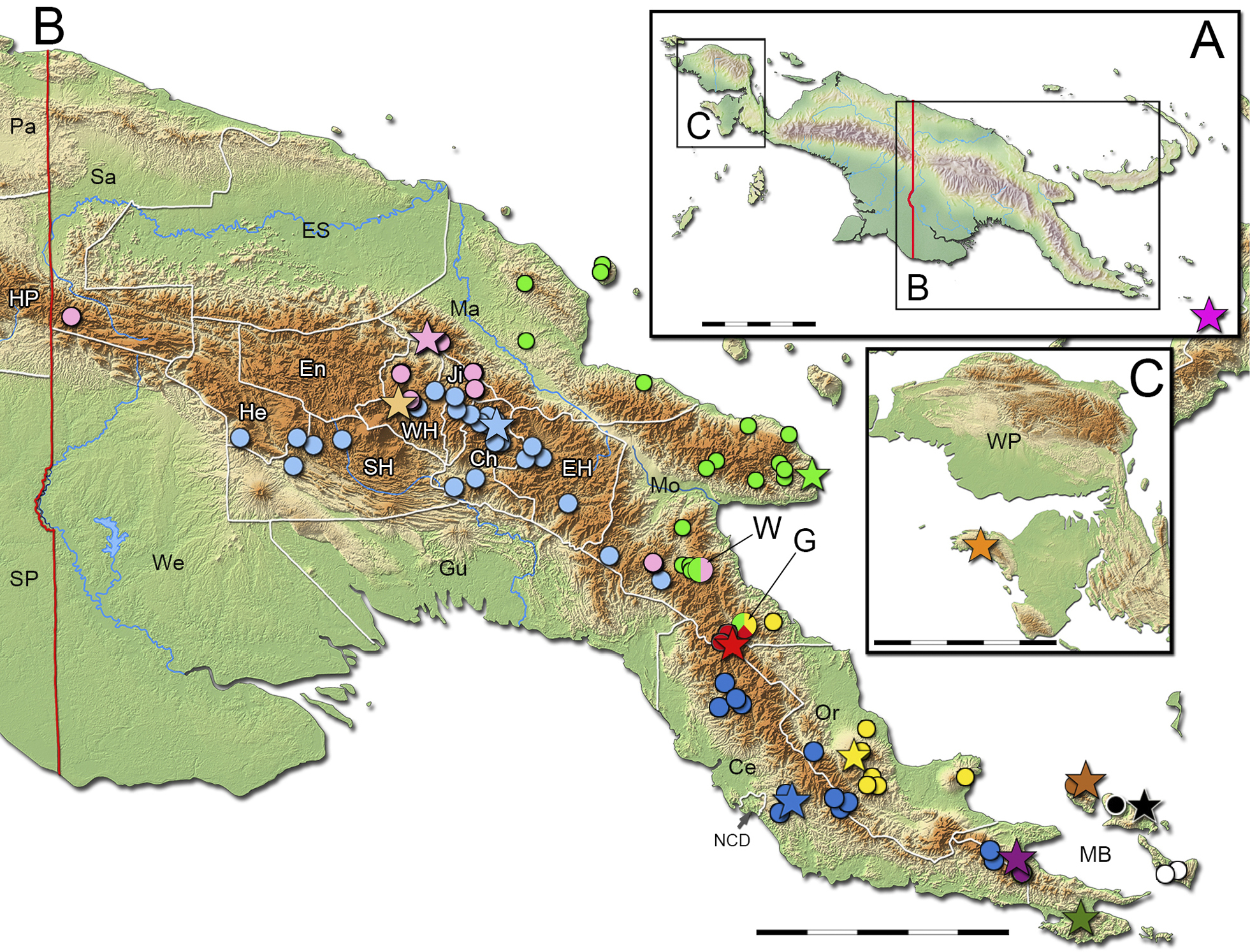
|
||
|
Type localities (stars) and other collection sites (circles) of Toxicocalamus loriae Group species. A Map of New Guinea and its satellite islands, showing the positions of the inset maps and the type locality of T. mintoni (magenta), an endemic of Sudest Island, Milne Bay Province, PNG. Scale = 500 km. B Papua New Guinea and adjacent areas of West New Guinea, Indonesia, with white lines demarcating provincial boundaries. Scale = 250 km. C West Papua Province, Indonesia (WP), showing the type locality of T. loennbergii comb. nov. (orange). Other species treated in this report are T. loriae (dark blue), T. lamingtoni comb. nov. (yellow), T. spilorhynchus sp. nov. (red), T. nymani comb. nov. (neon green), T. vertebralis sp. nov. (pink), and T. atratus sp. nov. (light blue). Additional related species in the T. loriae clade are T. goodenoughensis (brown), T. mattisoni (violet), T. nigrescens (black), T. pachysomus (dark green), and T. “loriae” Clade 4 (white). The type locality of the recently described dubious taxon T. longhagen (tan) is also indicated. Scale = 250 km. Provinces of PNG are Central (Ce), Chimbu (Ch; also spelled Simbu), Gulf (Gu), Hela (He; created in 2012), Eastern Highlands (EH), East Sepik (ES), Enga (En), Jiwaka (Ji; created in 2012), Madang (Ma), Milne Bay (MB), Morobe (Mo), National Capital District (NCD), Oro (Or; also known as Northern Province); Sandaun (Sa; formerly West Sepik), Southern Highlands (SH), Western (We), and Western Highlands (WH). Provinces of West New Guinea are Highland Papua (HP; created in 2022), Papua (Pa), and South Papua (SP; created in 2022). Sites of sympatry are Wau (W; neon green + pink) with two species and Garaina (G; neon green + red + yellow) with three species. |